May
30
2023
 Starting around 1550 and lasting through the 1600s, England had an energy crisis. They were running out of wood, which was the main source of fuel for residential and commercial heating. England also needed a lot of wood for their massive navy – it took about 2,000 trees to build one of the larger warships. As a result they turned to coal, which has a high energy density and worked nicely for heating. It has the not-insignificant problem, however, of generating a lot of pollution, choking large cities like London in black smoke. This lasted into the 20th century, culminating with the great London smog of 1952.
Starting around 1550 and lasting through the 1600s, England had an energy crisis. They were running out of wood, which was the main source of fuel for residential and commercial heating. England also needed a lot of wood for their massive navy – it took about 2,000 trees to build one of the larger warships. As a result they turned to coal, which has a high energy density and worked nicely for heating. It has the not-insignificant problem, however, of generating a lot of pollution, choking large cities like London in black smoke. This lasted into the 20th century, culminating with the great London smog of 1952.
The world still burns a lot of coal to generate heat, but generally not in homes. There are other options, especially where people live. We can generate heat by burning cleaner sources of fuel, like natural gas. We can also generate heat through electrical resistance, producing no pollution directly (only in the production of electricity, which is likely remote from the user). Heat can also be harvested from waste heat and pumped into buildings. Or heat can be moved from one source to another using a heat pump.
Moving to more efficient and environmentally friendly methods of producing heat is at least as important to minimizing global warming as generating clean electricity. About half of world energy is used simply to generate heat, more than any other use (generating electricity is 20% and transportation is 30%). Decarbonizing heat production is therefore arguably more important than decarbonizing either electricity production or transportation, although of course they are all important.
Two technologies are likely to make the most difference in decarbonizing heat production. The first is harvesting waste heat from energy production and other industrial processes. This requires producing energy somewhat close to where the heat is needed, which is another advantage of more distributed rather than centralized energy production. Harvesting waste heat needs to be designed up front for any installation that will generate a lot of heat. Data centers, for example, expend a lot of energy just cooling all those computers. That heat can be put to good use.
Continue Reading »
Mar
06
2023
Part 3
Hi Steve, and thank you for your timely response, and for even considering hosting this debate. There has been, and continues to be a “blackout” on almost all discussion regarding the science behind climate change. If “The science” is truly “settled”, it is a pretty shaky settlement! Why the blackout then?
I appreciate that you have pointed out some of my quirks that I use in constructing and argument. After all, this is a debate, and of course we come at it with different viewpoints and narratives, which makes debates all the more profoundly important to have. I think we would all agree that listening to other viewpoints other than our own, although may be uncomfortable, nonetheless helps us become more intelligent, enlightened, and wise.
While I do appreciate the pointing out of my biases (which we all have), there was very little substantive rebutting of the information I provided. I did use exact verbiage from the latest IPCC report, so nobody could accuse me of making a strawman argument. If you think I’m setting up a bunch of strawman arguments, I invite you to reach out to the authors of IPCC chapter 11: Human Health: Impacts, Adaptation, and Co-benefits and ask them why they are setting up these supposed confounded strawman arguments for me. If I can’t quote IPCC, the most trusted source of climate change information, then who can anyone trust regarding climate change information? The words I used to base my argument upon are their words, not mine.
You state: “So Scott’s method is fatally flawed – you cannot just look at raw incidence numbers and declare there is no effect from climate change…But Scott dismisses all of this as “modeling”, which he rejects out of hand, explicitly favoring raw data, which is profoundly naive. He also dismissed data on the risks increased by climate change, again favoring raw data that mixes in many confounding variables.”
Continue Reading »
Jan
20
2022
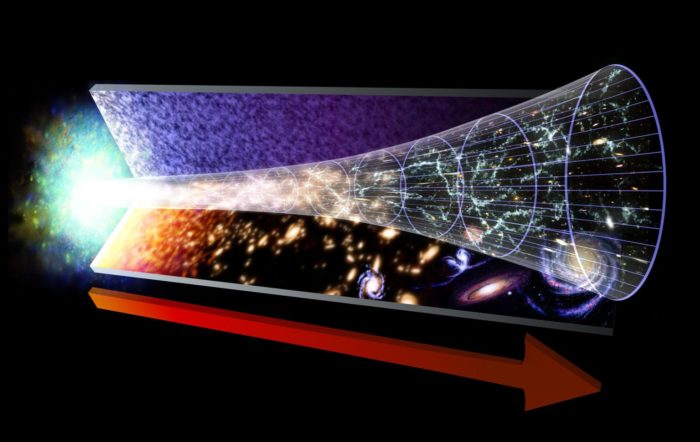 Arguably the biggest question is cosmology is where the Big Bang came from. We can extrapolate back from our observations of the universe and draw some high confidence conclusions. Since the universe is expanding, if we rewind time then the universe would contract as we go back in time until – it must have been a single point, an original singularity. The moment this point expanded rapidly into the universe was the Big Bang, but where did all the matter and energy that make up the universe come from to begin with? To make matters more confusing, the Big Bang also created space-time, so any reference to things happening at or before the Big Bang is tricky.
Arguably the biggest question is cosmology is where the Big Bang came from. We can extrapolate back from our observations of the universe and draw some high confidence conclusions. Since the universe is expanding, if we rewind time then the universe would contract as we go back in time until – it must have been a single point, an original singularity. The moment this point expanded rapidly into the universe was the Big Bang, but where did all the matter and energy that make up the universe come from to begin with? To make matters more confusing, the Big Bang also created space-time, so any reference to things happening at or before the Big Bang is tricky.
We can actually do experiments to test our ideas about the very early universe (less than a second after the Big Bang) by reproducing these high energies in particle accelerators. But at some point the energies exceed anything we can produce, and we are in the realm of purely theoretical physics. The question of where the singularity that became the Big Bang came from fits into this category.
There is no shortage of hypotheses about where the universe came from. One question is whether or not the universe could have come from literally nothing. This is a deep question that would take a book-length discussion to explore fully. My very basic understanding is that there are essentially two camps. The first states that something cannot come from nothing, and therefore there always had to be something, even if it was only a quantum fluctuation similar to what exists in “empty” space within our universe. Even the emptiest of space still contains a quantum “foam” of energy with particles briefly coming into existence and then annihilating each other. Maybe the entire universe is a giant quantum fluctuation in some grander quantum foam.
Continue Reading »
May
20
2021
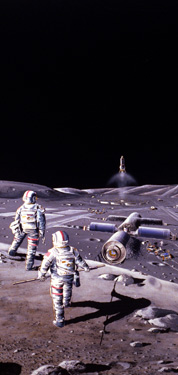 As project Artemis proceeds with plans not only to return to the Moon, but to produce the infrastructure for a long term presence, we need to deal with the issue of solar storms. If you haven’t seen the series, For All Mankind, I highly recommend it. In one episode they dramatize the effects of a particularly strong solar storm. I don’t think the special effects were accurate (the moon dust would not have kicked up like that) but the risk to human life was. If Artemis is going to be successful, we will need to be able to protect astronauts from these storms and the background radiation and be better able to predict them.
As project Artemis proceeds with plans not only to return to the Moon, but to produce the infrastructure for a long term presence, we need to deal with the issue of solar storms. If you haven’t seen the series, For All Mankind, I highly recommend it. In one episode they dramatize the effects of a particularly strong solar storm. I don’t think the special effects were accurate (the moon dust would not have kicked up like that) but the risk to human life was. If Artemis is going to be successful, we will need to be able to protect astronauts from these storms and the background radiation and be better able to predict them.
The solar wind is made mostly of plasma from the sun, protons and electrons, with a small percentage of helium and smaller still of heavier elements. The sun’s plasma is very hot and a the outer edges cannot be contained by the sun’s gravity. It will move along the magnetic field lines of the sun’s magnetic field and get pushed out streaming through the solar system like a bubble of radiation. We are protected from the constant flow of radiation by the Earth’s magnetic field. Once outside of low Earth orbit, however, that protection is gone. The Moon has no significant magnetic field and so astronauts would be constantly bathed in the solar wind. There are other sources of radiation as well, such as cosmic rays.
During the Apollo missions the astronauts each wore dosimeters to measure their total radiation exposure. Their total exposure was less than the maximum safe yearly exposure set for people, but this was over missions that lasted between 8-12 days. Radiation on the lunar surface is 200-1000 times that of the Earth’s surface, and 2.6 times that of the ISS.
Continue Reading »
Jan
28
2021
A recent study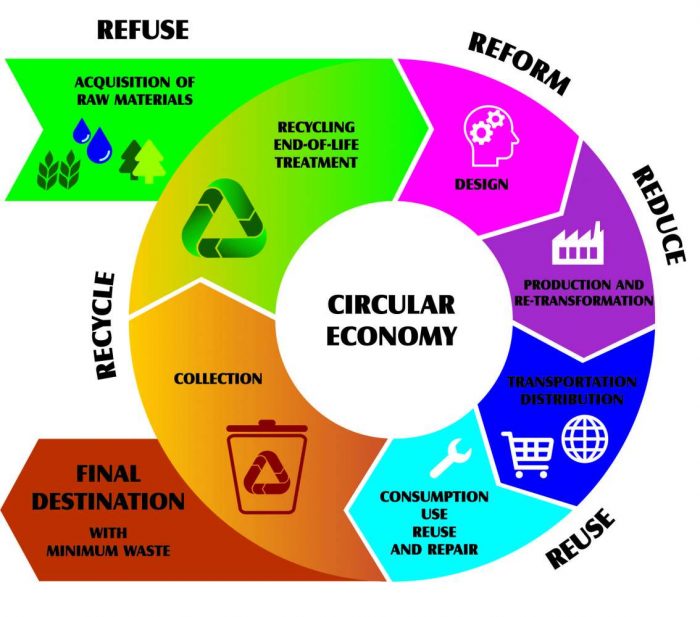 looks at the use of food waste to produce beneficial bacteria and nutrients for agriculture. Specifically they take beer mash and mixed produce discarded from a grocery store. They ferment it, and then add the result to the closed watering system of a greenhouse. The results are very encouraging – a significant increase in beneficial bacteria and carbon without any increase in pathogenic bacteria. In the US we waste about 50% of the food we grow and recycle only about 20% of it, so there is a huge untapped potential to return that food waste to the food-production stream. This system, if it works out, might add one method for doing so.
looks at the use of food waste to produce beneficial bacteria and nutrients for agriculture. Specifically they take beer mash and mixed produce discarded from a grocery store. They ferment it, and then add the result to the closed watering system of a greenhouse. The results are very encouraging – a significant increase in beneficial bacteria and carbon without any increase in pathogenic bacteria. In the US we waste about 50% of the food we grow and recycle only about 20% of it, so there is a huge untapped potential to return that food waste to the food-production stream. This system, if it works out, might add one method for doing so.
Such systems are an example of a circular production economy, rather than a linear system that begins with a natural resource and ends in a landfill. Linear systems are not indefinitely sustainable, as is becoming increasingly apparent as we approach 8 billion people on this planet. Anything we do on a global scale, like growing food, is going to be a stress on natural resources, including the availability of land.
Some argue, cruelly, in my opinion, that the best solution is to reduce the human population. I do think we need to ultimately get to a stable population, and the evidence shows an effective way to do this is to both combat poverty and promote women’s rights. This is then a win-win all around. We don’t have to starve people to death (people who propose this are never the ones who would starve), nor do we have to ban reproductive rights.
Eventually getting to a stable population in the billions, while a good thing, is not going to solve by itself the many issues of sustainability. Further, even if linear production from resource to landfill does not exhaust a specific resource it is still inefficient. So you don’t have to believe that we have or will reach “peak” whatever in order to see the advantages of designing a circular production economy.
Continue Reading »
Dec
15
2020
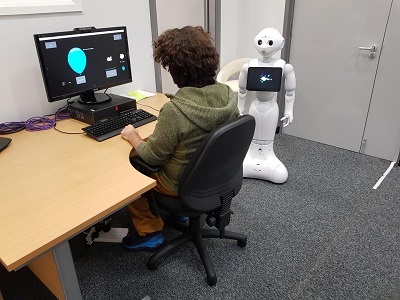 How susceptible would you be to suggestion or even manipulation by a robot, or even just a digital AI (artificial intelligence)? This is one of those questions where almost everyone thinks they would not be affected, while in reality many or even most people are. We don’t like to think that our behavior can easily be manipulated, but a century of psychological research tells a different story. There is an entire industry of marketing, advertising, and product placement based on the belief that your behaviors can be deliberately altered, and not just through persuasion but through psychological manipulation. Just look at our current political environment, and how easily large portions of our society can be convinced to at least express support for absurd ideas, simply by pushing the right buttons.
How susceptible would you be to suggestion or even manipulation by a robot, or even just a digital AI (artificial intelligence)? This is one of those questions where almost everyone thinks they would not be affected, while in reality many or even most people are. We don’t like to think that our behavior can easily be manipulated, but a century of psychological research tells a different story. There is an entire industry of marketing, advertising, and product placement based on the belief that your behaviors can be deliberately altered, and not just through persuasion but through psychological manipulation. Just look at our current political environment, and how easily large portions of our society can be convinced to at least express support for absurd ideas, simply by pushing the right buttons.
Robots and AI are likely to play dramatically increased roles in our society in the future. In fact, our world is already infused with AI to a greater extent that we realize. You have probably interacted with a bot online and didn’t realize it. For example, a recent study found that about half of twitter accounting spreading information about coronavirus are likely bots. What about when you know that an actual physical robot is the one giving you feedback – will that still affect your behavior. Apparently so.
In a recent study psychologists had subjects play a computer game which has already been validated as a marker of risk taking. The game involves hitting the space bar to inflate a digital balloon. As the balloon gets bigger, it becomes worth more digital pennies. You can cash in at any time. However, at random the balloon can also pop, and you then lose all your money. The more risk you take, the more money you can make, but the greater the chance that you lose it all, at least on that go. The researchers had subjects play the game in one of three scenarios – alone, with a robot present who told them when to begin, but then was silent, and with a robot present that would give them encouragement to keep going.
The group with the encouraging robot took significantly more risk in this game than the other two groups, which did not differ from each other. It would have been fun to have a fourth group with a human giving encouragement to see if that differed from the robot – perhaps in a follow up experiment. It’s also interesting that the robot-riskier group made more money than the other two groups. What do these results mean?
Continue Reading »
Dec
14
2020
 This week should see the first people in the US to actually receive an approved (at least EUA) vaccine to prevent SARS-CoV-2. There are three vaccines currently ready to go in the West, the Pfizer vaccine which received it’s EUA in the US on Friday and was already approved in the UK, Moderna which should get approval this week, and the Astra Zeneca vaccine which should not be too far behind. The (arguably) biggest challenge has been met – a massive scientific effort to develop vaccines in record time. This has been a collaboration between government and industry, and shows what we can accomplish with sufficient motivation (which translates into both money and easing red tape).
This week should see the first people in the US to actually receive an approved (at least EUA) vaccine to prevent SARS-CoV-2. There are three vaccines currently ready to go in the West, the Pfizer vaccine which received it’s EUA in the US on Friday and was already approved in the UK, Moderna which should get approval this week, and the Astra Zeneca vaccine which should not be too far behind. The (arguably) biggest challenge has been met – a massive scientific effort to develop vaccines in record time. This has been a collaboration between government and industry, and shows what we can accomplish with sufficient motivation (which translates into both money and easing red tape).
Now we have three further challenges in front of us. The companies need to mass produce their vaccines. This is happening with about 100 million doses ready to ship. We should have another 2 billion Pfizer doses by the end of 2021, and 1.5 billion Moderna doses. We also need to distribute the doses. This is happening through collaboration among FedEx, UPS, and the military who will get the doses to hospitals and physicians, who can then administer and track the doses. So far, so good.
The final hurdle, however, may prove the stickiest – we need people to accept the vaccine. In a December 9th survey by the AP-NORC, only 47% of Americans said they would get the vaccine, with 26% saying they would not, and 27% saying they are not sure. These and similar results have caused some to comment that the disinformation virus may prove deadlier than the COVID virus. We have a vaccine that can protect people from a deadly pandemic – this is a no-brainer. Resistance is partly due to a dedicated anti-vaccine movement that appears immune only to logic and evidence. We can only marginalize them. But these numbers go beyond the hard-core anti-vaxxers. People also fear what they don’t know, and these are the first mRNA vaccines to hit the market. So let’s review what these are, and the safety data.
Continue Reading »
Dec
11
2020
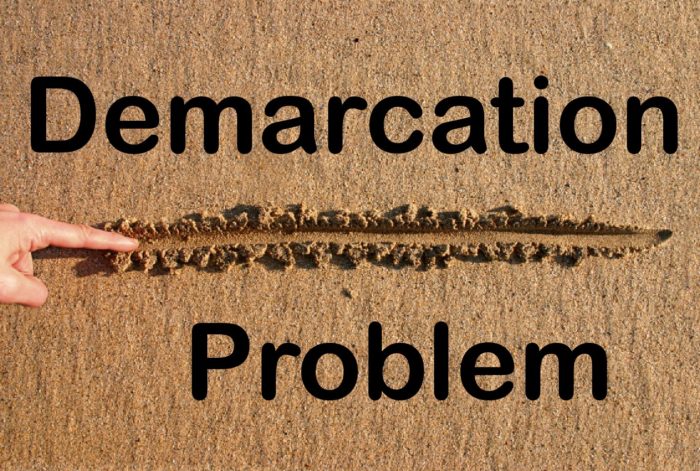 In a recent article in Medpage Today, Vinay Prasad offered his critiques of what he calls “medical skepticism”. Essentially he is talking about Science-Based Medicine and all my colleagues who engage in related activities. I am always open to criticism and love to engage about these topics. Unfortunately, Prasad’s criticism’s were based largely on his ignorance of what it is, exactly, that we do, wrapped around some huge logical fallacies. They are also arguments we have dealt with on numerous occasions before, so he could have saved time by just reading some of the very literature he felt knowledgeable enough to criticize. (And as an aside, the “skeptical of skeptics” meme is way overdone and ready to be retired.)
In a recent article in Medpage Today, Vinay Prasad offered his critiques of what he calls “medical skepticism”. Essentially he is talking about Science-Based Medicine and all my colleagues who engage in related activities. I am always open to criticism and love to engage about these topics. Unfortunately, Prasad’s criticism’s were based largely on his ignorance of what it is, exactly, that we do, wrapped around some huge logical fallacies. They are also arguments we have dealt with on numerous occasions before, so he could have saved time by just reading some of the very literature he felt knowledgeable enough to criticize. (And as an aside, the “skeptical of skeptics” meme is way overdone and ready to be retired.)
If I had to give a paraphrasing executive summary of Prasad’s article it would be this – medical skeptics should stop focusing on what they think is important, and should instead focus on what I think is important, even though I don’t really understand what it is that they do. In fact there is so much wrong with Prasad’s article it’s hard to know where to begin, but let’s start with some basic framing. Part of what Prasad is criticizing is our science communication (scicom), but again he seems to be unaware that scicom is a field unto itself, and so he is making some basic false assumptions, without being aware that he is doing so. This false assumption leads Prasad to conclude that medical experts should restrict themselves to the big problems within their area of medical expertise, without seeming to realize that scicom itself is an area of expertise.
Before I go further it is important to understand what we in the Science-Based Medicine and broader skeptical community do, and what our expertise actually is. First, we are science communicators, and this involves studying science communication itself. The big lessons of the last few decades, backed by actual research, is that the old “knowledge deficit” paradigm is mostly incorrect (not completely) and definitely insufficient. In most contexts you cannot change the way people think or behave by just giving them facts. You have to also engage with what they already believe and the complex motivations and patterns of belief that underlie them. Scicom involves, therefore, not just addressing scientific literacy but also critical thinking skills and media literacy. And in order to do this you need to understand the complex relationship between science and pseudoscience, and cognitive biases, conspiracy thinking, science-denial, and a host of other “critical thinking” skill sets.
Continue Reading »
Dec
10
2020
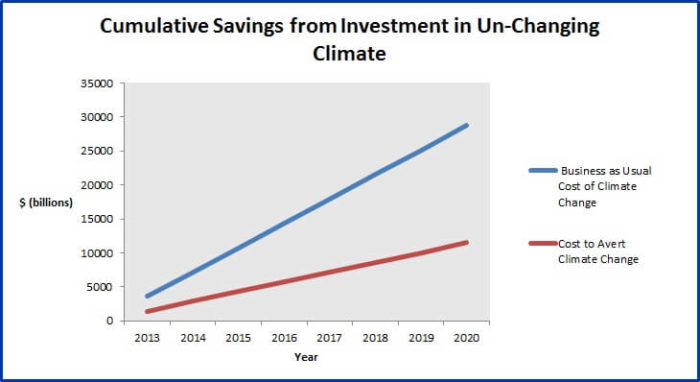 Of course there are many important issues facing the world, but arguably drastically reducing carbon emissions is near the top of the list. The 2020s is likely to be a pivotal decade for this effort, and will have a dramatic and long lasting effect. The reason for this is that we are nearing the end of our “carbon budget” – the cumulative amount of carbon we can release into the environment without causing warming >1.5C above pre-industrial levels. We are very close to exhausting this budget, and in fact most experts have set their sights on 2C as the goal, believing it is already too late to keep global warming below 1.5C. Without a major effort in this decade, we will miss the more liberal 2C target, we will have exhausted our carbon budget, and it will no longer be possible to avoid serious consequences of global warming. In fact, it’s possible it would then be too lake to stop a cascade of events that will eventually lead to 5-6C of warming through triggering threshold positive feedback events. This may take hundreds of years to play out, but it still may be unavoidable at that point.
Of course there are many important issues facing the world, but arguably drastically reducing carbon emissions is near the top of the list. The 2020s is likely to be a pivotal decade for this effort, and will have a dramatic and long lasting effect. The reason for this is that we are nearing the end of our “carbon budget” – the cumulative amount of carbon we can release into the environment without causing warming >1.5C above pre-industrial levels. We are very close to exhausting this budget, and in fact most experts have set their sights on 2C as the goal, believing it is already too late to keep global warming below 1.5C. Without a major effort in this decade, we will miss the more liberal 2C target, we will have exhausted our carbon budget, and it will no longer be possible to avoid serious consequences of global warming. In fact, it’s possible it would then be too lake to stop a cascade of events that will eventually lead to 5-6C of warming through triggering threshold positive feedback events. This may take hundreds of years to play out, but it still may be unavoidable at that point.
This is really the last decade we have to ensure a high probability of avoiding significant global warming by drastically reducing our carbon emissions. This means transforming our energy and transportation sectors into mostly carbon free technology. Industrial emissions will be harder, and require various technological advances, but any such advances there will help as well. This means, at the very least, we have to stop burning fossil fuel. This in turn means electric vehicles (with perhaps some role for hydrogen and biofuel), and an energy infrastructure built on renewable sources (wind, solar, geothermal, hydroelectric) and nuclear with some grid storage. All of this is achievable with current technology, and will reap benefits beyond climate change, such as reduced health care costs and deaths from pollution.
Often, those who push back against the suggestion that we need to make this change to our civilization a priority frame the choice before us as a false dichotomy – the climate vs the economy. More people will be harmed by the economic costs of decarbonization than will benefit from reducing carbon emissions, they claim. Often this strategy is coupled with denial of climate change itself, or unsupported assertions that climate change will not be so bad. They will often point to the most extreme predictions of climate change and argue that the entire field is “alarmist”.
Continue Reading »
Jul
16
2020
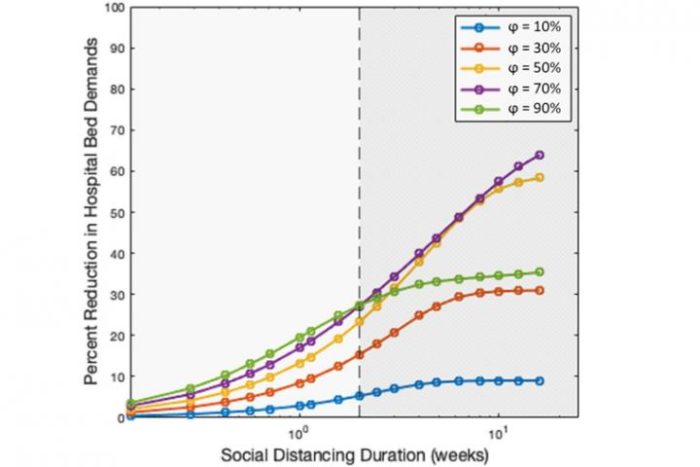 As the pandemic goes into its 5th month in the US it’s important that we do not suffer from pandemic fatigue. As I wrote previously, this is a marathon, not a sprint. In the US all indications are that we are failing, miserably. As of right now the world has suffered 13.7 million cases of COVID-19 and 587,000 deaths. The US has had almost 3.5 million of those cases, and 137,000 deaths. These numbers are certainly underestimates. While most other industrialized nations are winding down their cases and safely returning to life as normal, cases continue to rise in the US and are spiking in some states.
As the pandemic goes into its 5th month in the US it’s important that we do not suffer from pandemic fatigue. As I wrote previously, this is a marathon, not a sprint. In the US all indications are that we are failing, miserably. As of right now the world has suffered 13.7 million cases of COVID-19 and 587,000 deaths. The US has had almost 3.5 million of those cases, and 137,000 deaths. These numbers are certainly underestimates. While most other industrialized nations are winding down their cases and safely returning to life as normal, cases continue to rise in the US and are spiking in some states.
The bright side of this story is the massive scientific effort to study this virus and understand how to prevent and treat it. The science has been steadily progressing, and it is now clear what we need to do to stop the pandemic. All that is required is political will. Here are some very recent studies that reinforce what we now know.
First – masks work. They really do. They protect the wearer a little bit, and they protect other people a lot. This is because the virus is spread mostly in small droplets of fluid that are directly spread from one person to another. When you talk to someone, you are spraying them with these tiny droplets. When you wear a mask, this is mostly blocked. To add to the data that masks work, a recent study looked at infection rates among health care workers at MGB hospital. They found a dramatic decrease in infection rate once universal mask wearing was mandated.
The pushback against maskwearing seems particularly irrational. We are in the middle of a deadly pandemic. Wearing a mask is a small sacrifice that is a courtesy to those around you, mostly to minimize the chance that you infect them. Not wearing a mask is essentially a choice that your personal liberty is so important, you won’t bring yourself to take a small measure that will reduce the chance that you kill other people with your germs and perpetuate the broader pandemic.
Continue Reading »
 Starting around 1550 and lasting through the 1600s, England had an energy crisis. They were running out of wood, which was the main source of fuel for residential and commercial heating. England also needed a lot of wood for their massive navy – it took about 2,000 trees to build one of the larger warships. As a result they turned to coal, which has a high energy density and worked nicely for heating. It has the not-insignificant problem, however, of generating a lot of pollution, choking large cities like London in black smoke. This lasted into the 20th century, culminating with the great London smog of 1952.
Starting around 1550 and lasting through the 1600s, England had an energy crisis. They were running out of wood, which was the main source of fuel for residential and commercial heating. England also needed a lot of wood for their massive navy – it took about 2,000 trees to build one of the larger warships. As a result they turned to coal, which has a high energy density and worked nicely for heating. It has the not-insignificant problem, however, of generating a lot of pollution, choking large cities like London in black smoke. This lasted into the 20th century, culminating with the great London smog of 1952.
 Arguably the biggest question is cosmology is where the Big Bang came from. We can extrapolate back from our observations of the universe and draw some high confidence conclusions. Since the universe is expanding, if we rewind time then the universe would contract as we go back in time until – it must have been a single point, an original singularity. The moment this point expanded rapidly into the universe was the Big Bang, but where did all the matter and energy that make up the universe come from to begin with? To make matters more confusing, the Big Bang also created space-time, so any reference to things happening at or before the Big Bang is tricky.
Arguably the biggest question is cosmology is where the Big Bang came from. We can extrapolate back from our observations of the universe and draw some high confidence conclusions. Since the universe is expanding, if we rewind time then the universe would contract as we go back in time until – it must have been a single point, an original singularity. The moment this point expanded rapidly into the universe was the Big Bang, but where did all the matter and energy that make up the universe come from to begin with? To make matters more confusing, the Big Bang also created space-time, so any reference to things happening at or before the Big Bang is tricky. As project Artemis proceeds with plans not only to return to the Moon, but to produce the infrastructure for a long term presence, we need to deal with the issue of solar storms. If you haven’t seen the series, For All Mankind, I highly recommend it. In one episode they dramatize the effects of a particularly strong solar storm. I don’t think the special effects were accurate (the moon dust would not have kicked up like that) but the risk to human life was. If Artemis is going to be successful, we will need to be able to protect astronauts from these storms and the background radiation and be better able to predict them.
As project Artemis proceeds with plans not only to return to the Moon, but to produce the infrastructure for a long term presence, we need to deal with the issue of solar storms. If you haven’t seen the series, For All Mankind, I highly recommend it. In one episode they dramatize the effects of a particularly strong solar storm. I don’t think the special effects were accurate (the moon dust would not have kicked up like that) but the risk to human life was. If Artemis is going to be successful, we will need to be able to protect astronauts from these storms and the background radiation and be better able to predict them.
 How susceptible would you be to suggestion or even manipulation by a robot, or even just a digital AI (artificial intelligence)? This is one of those questions where almost everyone thinks they would not be affected, while in reality many or even most people are. We don’t like to think that our behavior can easily be manipulated, but a century of psychological research tells a different story. There is an entire industry of marketing, advertising, and product placement based on the belief that your behaviors can be deliberately altered, and not just through persuasion but through psychological manipulation. Just look at our current political environment, and how easily large portions of our society can be convinced to at least express support for absurd ideas, simply by pushing the right buttons.
How susceptible would you be to suggestion or even manipulation by a robot, or even just a digital AI (artificial intelligence)? This is one of those questions where almost everyone thinks they would not be affected, while in reality many or even most people are. We don’t like to think that our behavior can easily be manipulated, but a century of psychological research tells a different story. There is an entire industry of marketing, advertising, and product placement based on the belief that your behaviors can be deliberately altered, and not just through persuasion but through psychological manipulation. Just look at our current political environment, and how easily large portions of our society can be convinced to at least express support for absurd ideas, simply by pushing the right buttons. This week should see the first people in the US to actually receive an approved (at least EUA) vaccine to prevent SARS-CoV-2. There are three vaccines currently ready to go in the West, the Pfizer vaccine which received it’s EUA in the US on Friday and was already approved in the UK, Moderna which should get approval this week, and the Astra Zeneca vaccine which should not be too far behind. The (arguably) biggest challenge has been met – a massive scientific effort to develop vaccines in record time. This has been a collaboration between government and industry, and shows what we can accomplish with sufficient motivation (which translates into both money and easing red tape).
This week should see the first people in the US to actually receive an approved (at least EUA) vaccine to prevent SARS-CoV-2. There are three vaccines currently ready to go in the West, the Pfizer vaccine which received it’s EUA in the US on Friday and was already approved in the UK, Moderna which should get approval this week, and the Astra Zeneca vaccine which should not be too far behind. The (arguably) biggest challenge has been met – a massive scientific effort to develop vaccines in record time. This has been a collaboration between government and industry, and shows what we can accomplish with sufficient motivation (which translates into both money and easing red tape). In a
In a  Of course there are many important issues facing the world, but arguably drastically reducing carbon emissions is near the top of the list. The 2020s is likely to be a pivotal decade for this effort, and will have a dramatic and long lasting effect. The reason for this is that we are nearing the end of our
Of course there are many important issues facing the world, but arguably drastically reducing carbon emissions is near the top of the list. The 2020s is likely to be a pivotal decade for this effort, and will have a dramatic and long lasting effect. The reason for this is that we are nearing the end of our  As the pandemic goes into its 5th month in the US it’s important that we do not suffer from pandemic fatigue.
As the pandemic goes into its 5th month in the US it’s important that we do not suffer from pandemic fatigue. 




